本文
Second tour report (Owari and Chita)
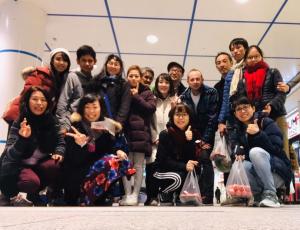
Aichi Prefecture is located near the center of the main island of Japan. Known for Nagoya city and Chubu Centrair International Airport, Aichi provides excellent access to both eastern and western Japan.
Blessed with a mild climate and rich water resources, Aichi has prosperous agriculture, forestry and fisheries that deserve much wider recognition.
Naturally, Aichi has its own distinctive and very enjoyable food culture, including Nagoya-meshi (local cuisine unique to Nagoya) and akamiso (dark-brown miso). As an additional pleasure, we advise savoring the ingredients themselves!
We have organized a free tour to experience the delights of Aichi agriculture, forestry and fishery products.
The second tour was held on Sunday, December 8, 2019, and the participants visited various tourist attractions in the Chita and Owari areas.
This time, the participants include a Ukrainian American, a Sri Lanka-born Australian, as well as Vietnamese, Peruvians and Brazilians living in Japan.
9:10 Meet at Nagoya Station
10:00 Visit Kunizakari Sake Museum of Nakano Sake Brewery (2-24 Higashi-Hommachi, Handa City)
11:45 Visit JA Agri Town Genki no Sato (1-1 Shoemon Sinden, Yoshida-machi, Obu City)
14:15 Visit Inazawa Fruits Farm (26 Sobue Minamigata, Sobue-cho, Inazawa City)
16:30 Visit Pipitto! Aichi (OASIS 21, 1-11-1 Higashi Sakura, Higashi-ku, Nagoya City)
1. Kunizakari Sake Museum of Nakano Sake Brewery
We first visited “Kunizakari Sake Museum” of Nakano Sake Brewery. The brewery was founded in 1844 in Handa City, a former shipping industry town, which has also been famous for its sake brewing since the Edo period, boasting more than 200 sake breweries in its heyday.
This museum is located within a sake warehouse where the brewery used to store sake for approximately 200 years until 1972.
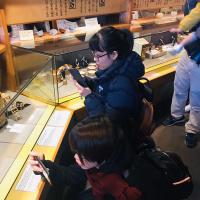
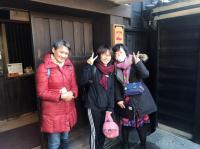
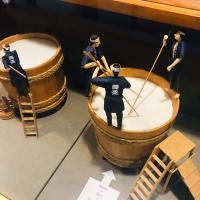
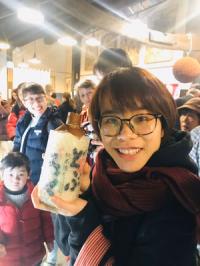
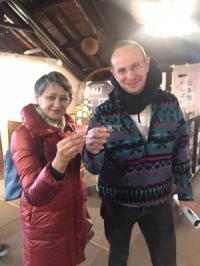
(In Vietnam, there is a rice-based liquor similar to the Japanese doburoku. The participants were quite interested in amazake (sweet mild sake) as well! )
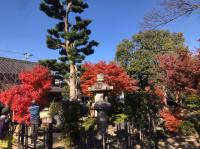
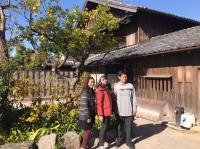
(The participants took pictures of beautiful scarlet-tinged leaves on the former Nakano family premises next to the museum. )
For lunch, we went to the restaurant “Danran-tei” where dishes using local fresh foods from the Genki no Sato farmers’ market are offered. We all had a Japanese-style set menu featuring locally produced grated yam.
Some of the participants ate grated yam for the first time in their lives. Some were very impressed by its deliciousness while others struggled to work out how to eat it.
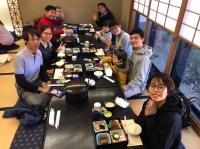
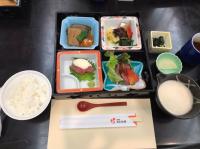
(“Itadakimasu! (Let’s eat!)” Everyone enjoyed the delicious lunch.First-time experience of serving rice in a bowl from a traditional wooden rice container!)
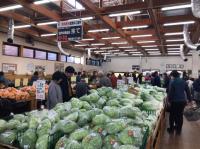
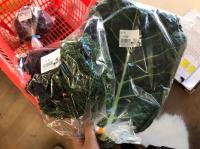
(Many of the participants cooked their home country’s cuisine in their residences. So they bought foods at the farmers’ market.Surprised to find familiar vegetables with unfamiliar shapes!)
We next visited Inazawa City, famous for its gingkoes.
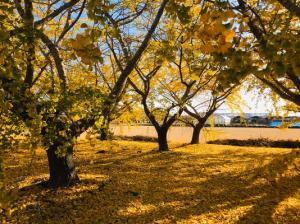
As we have a warm winter this year, the autumn colors of the gingko trees were still at their best—the scenery was emblazoned with beautifully yellow-tinted leaves both in the sky and on the ground, enthralling all the participants.
Then, we visited the hothouse of Inazawa Fruits Farm, replete with tropical fruit trees. The Vietnamese and Brazilian participants were elated, saying they felt as if they were in their home countries. One of the participants even discovered a discreet cluster of lemon grass secluded in the corner of the hothouse.
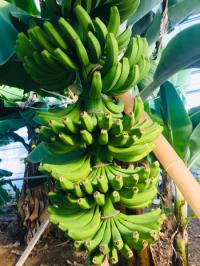
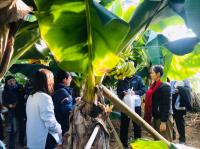
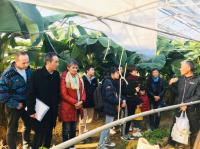
(Ishida-san, the owner of the farm, became ill when he was in his thirties. This taught him the importance of keeping healthy, and so he tries not to use agrochemicals as far as possible. He also offers lodging at the farm to allow people to experience the delight of agriculture and eating.)
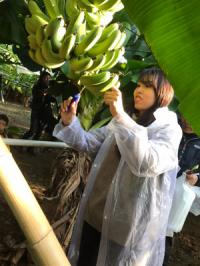
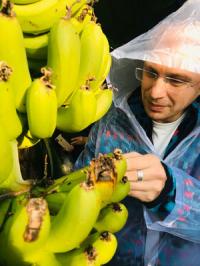
(We harvested bananas and green papayas. )
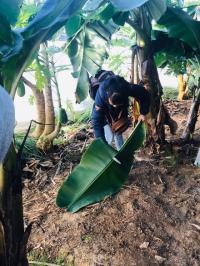
(Vietnamese cuisine uses banana leaves. This custom gave the Vietnamese participants remarkable expertise in handling banana leaves.)
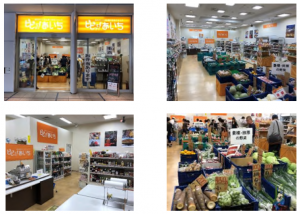
Pipitto! Aichi, located at OASIS 21 in the busy shopping area of Sakae in Nagoya City, is the only showroom of Aichi Prefecture’s local specialties in Japan.
In the store, a variety of local foods including delicatessen goods and souvenir snacks are offered.
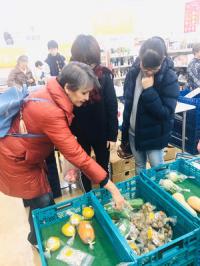
(The store has a large selection, and the participants selected various kinds of merchandise with great interest. )
On the bus ride, we discussed the agricultural products and food cultures of Aichi Prefecture and the respective participants’ home countries.
Some said that while Vietnamese and Peruvian rice grains are large and slender, Japanese rice grains are small and roundish with a nice and chewy texture. They agreed that Japanese rice is sweet and tasty.
The local alcoholic drinks of the participants’ home countries tend to be stronger than Japanese sake. Many said they love drinking as it helps strengthen bonds with family and friends anywhere in the world.
Also, many expressed their love of sashimi, saying in their home countries there are few restaurants where the dish of fresh and delicious raw fish is offered. When asked about wasabi, they all made faces. They loved spicy red pepper but did not like the hotness of wasabi.
It was a very enjoyable international exchange tour, and we all discussed enthusiastically the food cultures of different countries in the bus and at the places we visited.
All the participants were well-mannered, courteous, considerate and kind souls, deeply impressing the staff members.
Thank you very much everyone for making this tour so pleasurable!


